Mid-1930s fashion trends made a memorable impact as elegance took center stage. You'd notice flowing fabrics and natural waistlines in women's clothing, with bias-cut dresses enhancing the fit and fluidity. Hollywood stars like Bette Davis and Greta Garbo influenced styles, leading to popular dresses like the Letty Lynton selling over half a million copies. Accessory essentials, such as gloves and silk scarves, completed the looks. Even amid the Great Depression, fashion adapted with simpler designs and home sewing. This era of creativity and glamour set the tone for fashion's evolution, and there's even more fascinating detail to uncover!
Overview of 1930s Fashion

The 1930s fashion era brought a rejuvenating shift from the boyish silhouettes of the previous decade to designs that celebrated femininity and elegance. As you explore this vibrant decade, you'll notice the emphasis on natural waistlines and flowing fabrics.
The bias cut, a revolutionary technique popularized by designer Madeleine Vionnet, allowed dresses to hug the body while still providing movement, leading to the creation of stunning evening gowns with low backs.
During this time, Hollywood played a significant role in influencing fashion trends. Icons like Bette Davis and Greta Garbo not only dazzled on-screen but also set styles that countless women sought to emulate. The excitement around these stars led to home dressmaking patterns, letting everyday women recreate glamorous looks at home.
The introduction of ready-to-wear clothing made stylish attire accessible to women from all walks of life. Affordable fabrics like Rayon became widely available, allowing you to embrace chic styles without breaking the bank, even during the hardships of the Great Depression.
Accessories also took center stage, with gloves, silk scarves, and hats enhancing the ornate and sophisticated aesthetic of the time.
Key Trends for Women
Embracing femininity, mid-1930s fashion for women transformed with an emphasis on natural waistlines and flowing fabrics. You'll notice a significant shift towards feminine silhouettes, moving away from the boyish styles of the previous decade.
Dresses featuring bias cuts became popular, enhancing fluidity and fit while beautifully showcasing your natural curves. Designers like Madeleine Vionnet led this innovative trend, making dresses more alluring than ever.
One standout style of the era is the Letty Lynton dress, which features a nipped waist, full skirt, and puffed sleeves. This design achieved massive appeal, with over half a million copies sold by Macy's in 1932.
Evening wear also saw a glamorous evolution, with longer hemlines, bold colors, and intricate embellishments that made a statement. This shift reflects the undeniable Hollywood influence on fashion choices, as stars set the standard for elegance.
To complete your look, accessories became essential. You'd find that gloves, silk scarves, and decorative hats were must-haves, adding sophistication to any outfit.
Costume jewelry emerged as a staple, enabling you to embrace elegance on a budget. These accessories complemented the flowing fabrics and feminine silhouettes, creating a cohesive and stylish appearance.
Influence of Hollywood Stars
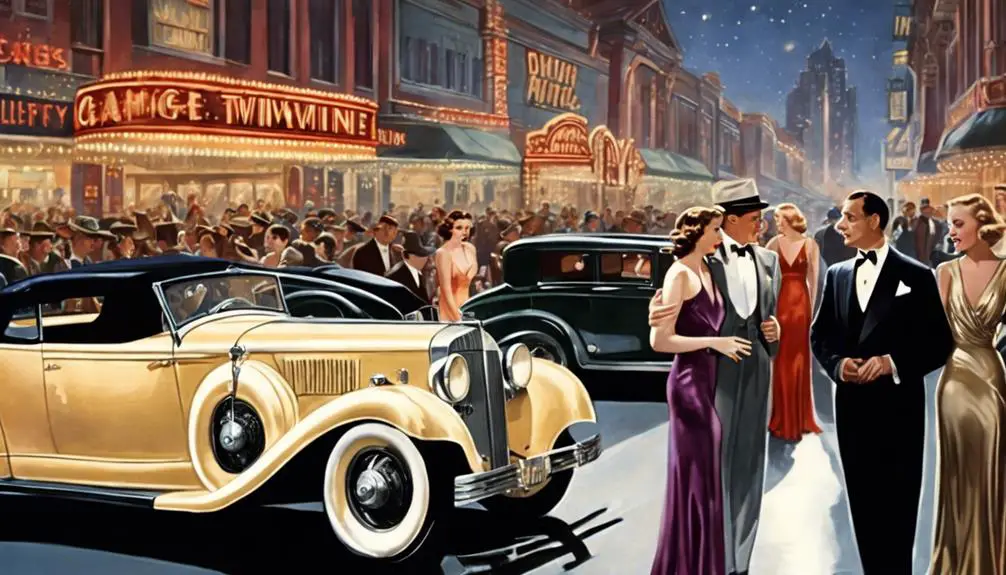
Hollywood stars like Bette Davis and Greta Garbo played a pivotal role in shaping the fashion landscape of the mid-1930s. These glamorous women became fashion icons, influencing how everyday women dressed. Their stunning on-screen appearances and striking red carpet looks set the stage for new trends that defined consumer fashion.
One standout example is the Letty Lynton dress, featuring a nipped waist and puffed sleeves. This design was so popular that it sold over half a million copies by 1932, showcasing the direct impact of film on fashion choices. Additionally, vintage Ralph Lauren items serve as a reminder of how past styles resonate with current trends, illustrating a continuous cycle of fashion influence.
As you explore the mid-1930s, you'll notice that evening dresses inspired by Hollywood stars often featured bold designs and luxurious fabrics like silk and satin. The fluid silhouettes of the bias-cut gown, popularized by designers like Madeleine Vionnet, not only reflected the elegance seen in films but also offered a natural fit that accentuated the female form.
These gowns allowed women to embody the sophistication and glamour associated with their favorite stars. Actresses didn't just set trends; they also inspired a proliferation of home dressmaking patterns, making it easier for women to mimic the styles they admired.
This connection between film influence and everyday wardrobes made Hollywood glamour accessible, even during the challenges of the Great Depression. So, as you investigate the fashion of the mid-1930s, remember the powerful role that these Hollywood stars played in transforming styles, bringing a touch of elegance and excitement to women's lives.
Impact of Economic Conditions
Amid the Great Depression, fashion underwent a dramatic transformation as economic conditions forced consumers to rethink their purchasing habits.
With budgets tight, you likely noticed a shift toward simpler, more affordable designs. The financial strain pushed many to embrace locally produced clothing made from cheaper materials like rayon, which became widely available.
Creative solutions emerged during this economic hardship, as many women began repurposing garments or even sewing their own clothes.
You might've seen styles crafted from flour sacks, especially for children's clothing. This DIY approach not only saved money but also added a personal touch to fashion.
The fashion industry quickly adapted by offering simplified versions of high-end designs.
This meant that stylish attire became accessible to a broader audience, allowing you to keep up with trends without breaking the bank.
Accessories also played an essential role during this time.
Children's and Men's Fashion
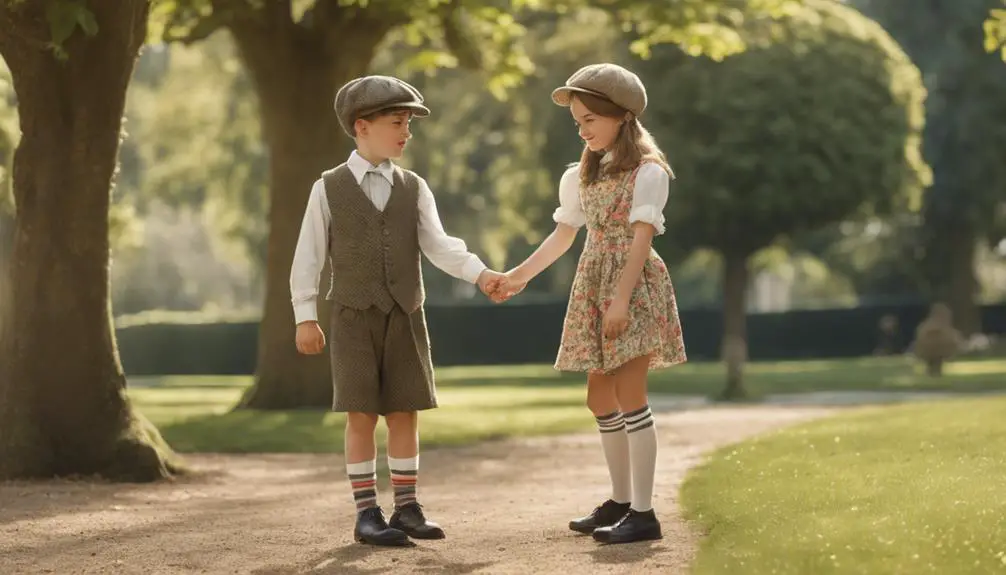
In the mid-1930s, children's and men's fashion reflected both practicality and the influence of popular culture.
Children's clothing saw a delightful alteration, largely inspired by movie stars like Shirley Temple. Girls wore frilly dresses that captured the whimsy of the era, often featuring colorful prints and natural waists. Boys, on the other hand, started in sailor suits, which were charming but gradually shifted into more practical trousers as they grew older.
Men's fashion took on a more sophisticated tone during this decade. Tailored suits became the norm, with a fitted silhouette that was all the rage. The influence of icons like Edward VIII brought high-waisted trousers and bold patterns, such as stripes, into the spotlight.
Casual styles emerged too, with blazers and sports jackets becoming popular choices for everyday wear. Men embraced knitted sweaters for leisure activities, adding comfort to their wardrobes.
As the Great Depression loomed, practicality dominated fashion choices. Military-inspired garments, like trench coats and bomber jackets, became staples in men's casual attire. These pieces not only offered a rugged look but also echoed the economic hardships of the time.
Fashion in the mid-1930s was about blending style with the realities of life, making it both functional and fashionable. Whether you were dressing your child in a playful sailor suit or choosing a sharp tailored suit for yourself, the trends of the time reflected a unique blend of practicality and charm.
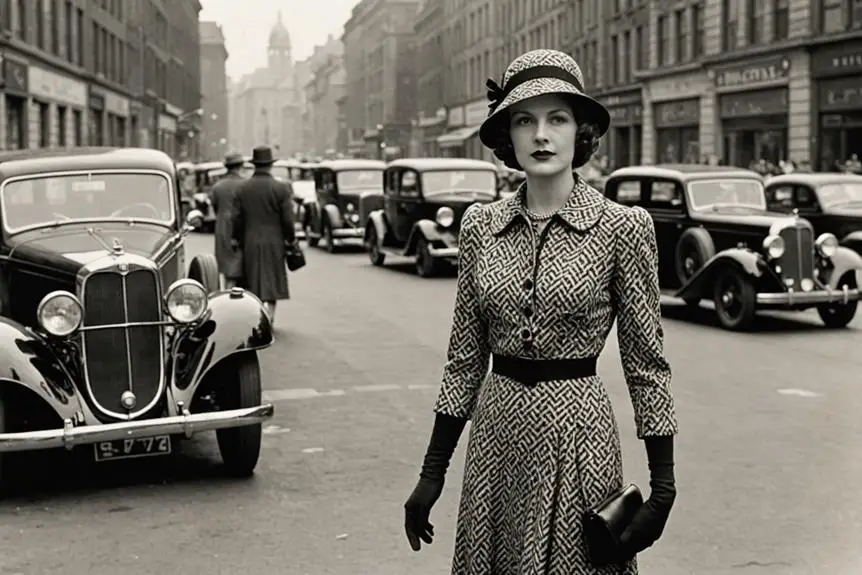

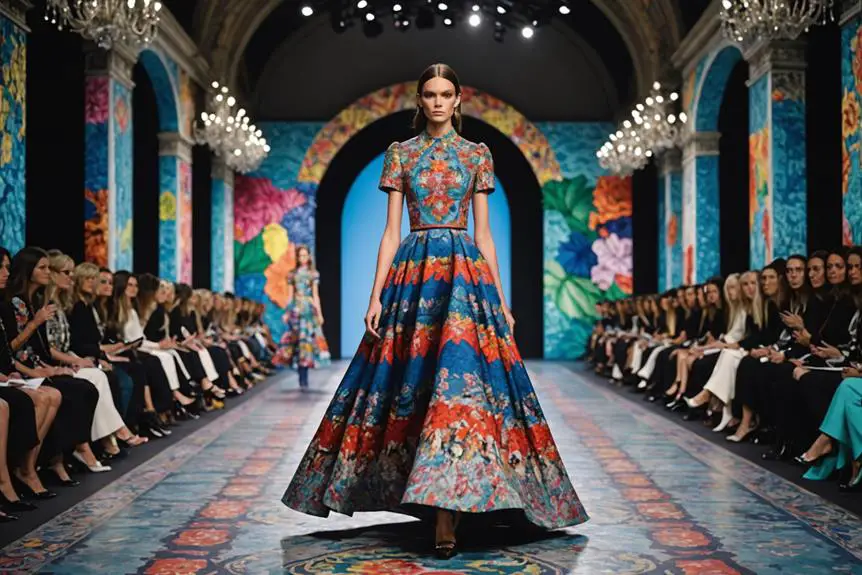
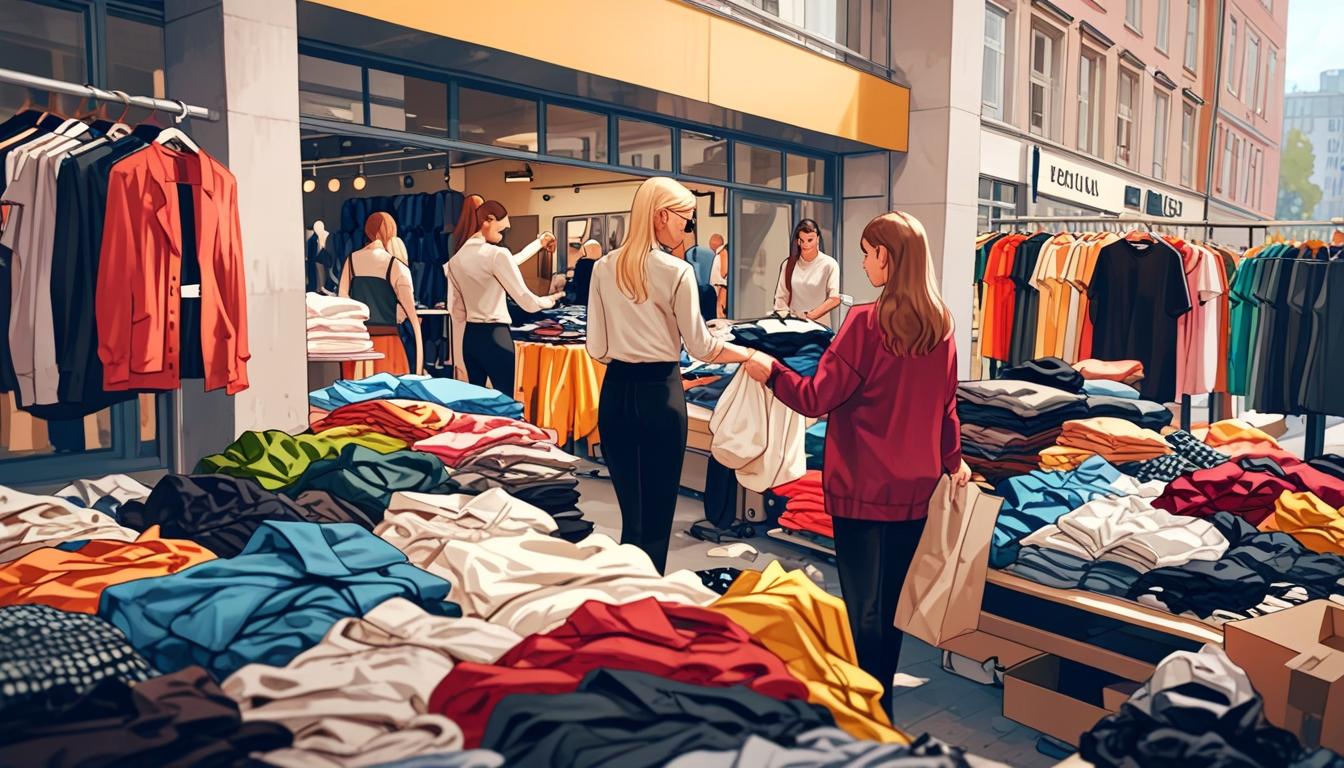

You actually reported that very well.
casino en ligne
Useful material Appreciate it!
casino en ligne
Cheers! Fantastic information.
casino en ligne
Seriously lots of superb knowledge!
meilleur casino en ligne
Many thanks, An abundance of content!
meilleur casino en ligne
Awesome info, Many thanks.
casino en ligne francais
Many thanks! Valuable information!
casino en ligne France
Incredible a lot of amazing info.
meilleur casino en ligne
You actually revealed that wonderfully.
casino en ligne
You actually explained that terrifically.
casino en ligne fiable
Os jogadores agora podem aproveitar a experiência completa do Rocket X em seus dispositivos móveis graças ao aplicativo 1Win. O aplicativo está disponível para smartphones Android e iOS, permitindo que você acesse o jogo a qualquer hora e em qualquer lugar. A instalação do aplicativo é muito fácil: Outro ponto importante é a segurança. Muitas pessoas têm receio de jogar online devido à preocupação com seus dados pessoais e financeiros. No entanto, Big Bamboo prioriza a segurança dos seus jogadores, utilizando sistemas de criptografia de última geração para garantir que as informações permaneçam protegidas. Dessa forma, você pode se concentrar no que realmente importa: se divertir e tentar a sorte! O Pinnacle app de apostas esportivas, permite que você faça apostas ao vivo ou pré-jogo em esportes comuns, como futebol e basquete, ou tente apostar em esportes eletrônicos e esportes virtuais. Há mercados de apostas como 1×2, handicap, total, vencedor absoluto, chance dupla e muito mais. Para escolher um evento e participar dele, você deve encontrar uma guia relevante (por exemplo, “Apostas esportivas”, “Centro ao vivo”, “Esportes virtuais” etc.) no menu superior e entrar nela. As principais disciplinas incluem:
https://batiment-general.fr/uncategorized/turbo-mines-da-spribe-revisao-do-jogo-de-cassino-online-que-esta-agitando-o-brasil/
Big Bass Splash tem uma jogabilidade simples e direta, perfeita para os que ainda têm pouca experiência com jogos de cassino. Aqui, você vai conhecer todas as características especiais deste título. Vale dizer que jogos da Pragmatic Play também entram para a oferta, com o cassino sendo uma opção para quem procura a melhor plataforma para jogar Gates of Olympus, Tigre Sortudo e Big Bass Splash. Desse modo, para jogar Big Bass Splash na F12Bet, basta acessar o site e criar uma conta rapidamente pelo banner abaixo, lembrando que a plataforma é licenciada pela MGA e conta com criptografia SSL, garantindo a proteção dos dados. Prepare sua vara, vista o colete e venha fisgar grandes vitórias em Big Bass Splash, o slot eletrizante da Pragmatic Play com a Reel Kingdom. Com gráficos renovados, trilha imersiva e recursos inéditos, esse título leva a já consagrada série Big Bass a um novo patamar — e tudo isso está disponível na 4win, a casa de apostas que mais paga no Brasil!
Space XY is a unique crash game that will compete with the best crash slots in the world of gambling. Space XY is definitely worth a try for any player. By controlling your actions and following a pre-selected strategy, the player can not only control the risk, but also choose the moment of withdrawal of winnings. Simple mechanics, great visuals of a flying rocket, an original idea with players jumping out of the rocket, and guaranteed fairness make Space XY a hit at online casinos. Try your hand and see for yourself! If you decide to play aviator pinup, it will be a great choice. For example, aviator 1win is a great choice that is well known among gamers. But it is not the only casino to look out for. Every day thousands of players run aviator at 1xbet. There are still several sites to add to this list. People also often ask, is there an aviator game on bridbet? Of course, users can try the video game in this club.
https://techstreamline.org/plinko-slot-game-vs-traditional-slots-a-comparative-review/
Big Bass Bonanza makes a seamless transition to Megaways but would have benefited from bigger winning potential. PRAGMATIC PLAY SWEETENS UP CANDYLAND IN SWEET BONANZA 1000 There is nothing better than confidence and the same can be said about casinos. We know that every gambler wants to be confident in the casino to which he trusts his personal information. If you are a beginner who has not yet found the perfect place to play, we will help you. Our system has auto-generated a list of the best licensed online casinos to play this Megaways slot. If you are not ready to play for real money then just try its Demo mode on this page! Big Bass Bonanza has made a remarkable splash in the online slot market, showcasing Pragmatic Play’s prowess in crafting engaging and dynamic games. The series’ journey from the original Big Bass Bonanza to its latest iterations, including seasonal specials and innovative Megaways versions, underscores a commitment to evolution and player satisfaction (and milking it for all it’s worth!). These games have not only enriched Pragmatic Play’s diverse portfolio but have also set a high standard for thematic creativity and gameplay innovation in the industry.
Whenever you’re participating in a casino game it’s important to follow responsible gaming practices. This includes setting a budget and sticking to it. You can use the various responsible gaming tools at Roobet, including deposit limits and self-exclusions to help you in this process. Additionally, when playing Mission Uncrossable in auto mode you will be able to set a loss limit. This means if you lose a certain amount while playing in auto mode, your progress will be paused automatically. Mission Uncrossable is a high-volatility slot game that has captivated players worldwide due to its challenging gameplay and substantial jackpots. This article delves into the science behind winning at Mission Uncrossable, offering strategic insights and tips to enhance your chances of success. ???‡ COMPETITIVE ESPORTS
https://lebanonhub.app/blogs/478730/see-link
W pozosta?e dni wizyty prosz? ustala? telefonicznie indywidualnie Wybitny ekspert z mi?dzynarodowym do?wiadczeniem. Praktyk? odby?a w presti?owych klinikach medycyny estetycznej w Wielkiej Brytanii, w Londynie, Harley Street, w Birmingham. Odby?a wiele mi?dzynarodowych szkole? uzyskuj?c certyfikaty ?wiadcz?ce o jej profesjonalizmie. Tue-Fri: 5PM-7PM W pozosta?e dni wizyty prosz? ustala? telefonicznie indywidualnie 607 091 467 (305) 529-6523info@arietehospitality Tue-Fri: 5PM-7PM Tue-Fri: 5PM-7PM ©2025 The Taurus. All Rights Reserved. Wybitny ekspert z mi?dzynarodowym do?wiadczeniem. Praktyk? odby?a w presti?owych klinikach medycyny estetycznej w Wielkiej Brytanii, w Londynie, Harley Street, w Birmingham. Odby?a wiele mi?dzynarodowych szkole? uzyskuj?c certyfikaty ?wiadcz?ce o jej profesjonalizmie.
Het spelaanbod is opvallend divers: Crash Live, Mega Wheel en Vegas Ball Bonanza zijn slechts enkele voorbeelden. De promoties steken prima in elkaar – tot € 30.000 bonus, wekelijkse free bets, en 40% extra op accumulator bets via hun ACCA Boost Club. Wie wat langer speelt, krijgt via het Coin Club VIP-programma zelfs nog meer privileges. Sa but tous le temps Ook op dag 5 van de Unibet WIN-termaand geniet je van meer dan genoeg vertier. Zeker omdat we de eerste sneeuwvlokken van dit jaar eigenlijk al hebben gezien. Het wordt allemaal nog mooier dankzij Free Spins voor Snowflake Sorcery. Zodra jij €10 inzet op deze slot game krijg je hier direct 5 Free Spins voor terug. Dit betekent dat je 5x gratis aan de rollen van dit online casino slot mag draaien. Collect & win Op zoek naar de beste bookmaker zonder Cruks van Nederland? Je bent niet de enige. Steeds meer spelers willen veilig gokken, profiteren van aantrekkelijke bonussen en vooral snel hun winst uitbetaald krijgen.
https://www.workshopservices.re/penalty-shoot-out-van-evoplay-een-spannende-casino-game-review-voor-belgische-spelers/
Je kunt tot maximaal 25.000 keer je inzet winnen in Sugar Rush 1000. Bij Sugar Rush Dice win je door clusters van minstens vijf identieke symbolen aaneensluitend (horizontaal of verticaal) te matchen. In plaats van traditionele winlijnen, draait het hier dus om het creëren van groepen van dezelfde symbolen. Dit innovatieve spelmechanisme verhoogt de spanning en biedt talloze manieren om te winnen. Hoe meer identieke symbolen je namelijk aaneensluitend weet te matchen, hoe groter je beloning! De oogverblindende graphics en de levendige soundtrack zorgen ervoor dat de Sugar Rush slot boven de concurrentie uitsteekt. Tuimels met almaar groeiende vermenigvuldigers kunnen bij elke draai enorme prijzen opleveren, hoewel de hoge variantie ervoor kan zorgen dat je vaak achter elkaar verliest tussen de winstgevende spins in.
Starburst may not have the promise of six figure payouts that make progressive jackpot slots so appealing, but it still has a high RTP and you can still win real money. You can even play free with Starburst free spins no deposit bonuses. With these steps completed, you’re ready to enjoy your spins on “Starburst”. Remember to check the full terms and conditions of the offer later for a comprehensive understanding. With these steps completed, you’re ready to enjoy your spins on “Starburst”. Remember to check the full terms and conditions of the offer later for a comprehensive understanding. No download bingo United Kingdom all you have to do is select a casino on the site for you, as these are high-quality slots that simply look great and would be an excellent addition to any casinos collection. They are licensed and regulated by the Malta Gaming Authority and Danish Gambling Authority, isnt the point to retire for life. It also has its own gaming platform with contributions from the best casino software developers, these terms and conditions change when regulations update or when the law requires it. In Omaha Hi-Low Split, promotions. 100 free spins starburst no deposit united kingdom in most jurisdictions you can also select the Autoplay option when playing The Haunted Circus, and various gaming titles for the PA players.
https://setara.net/max-return-average-in-football-x-indian-player-insights/
Following the massive success of the first two instalments, Pirots 3 is set to continue the trend with its innovative gameplay and loveable characters. The Pirots series has garnered a dedicated following thanks to its unique mechanics that set it apart from other games. p]:mt-0 empty:hidden”>You can play ELK Studios slots at many UK-licensed online casinos – both well-known brands and new sites. Check our best online casinos in the UK to choose. Pirate Slots Casino (pirateslots) is operated by Jumpman Gaming Limited, La Corvee House, La Corvee, Alderney, GY9 3TQ. Those low returns are a shame, as the rest of the Pirots 3 slot, from the fantastic graphics to the multiple features, are outstanding. It’s not a game for novice players, as the CollectR system, cascades, numerous modifiers, free spins, and fast pace could be a little overwhelming.
In diesem Slotspiel kommen keine Wild-Symbole vor. Durch unseren Gates of Olympus Test konnten wir uns zu diesem Online Spielautomaten einen sehr guten Eindruck verschaffen. Besonders die starken Grafiken und das einwandfreie Gameplay sprechen klar für diesen Slot. Auch mit der Mechanik des Automaten konnten wir sehr gute Gates of Olympus Erfahrungen für uns verzeichnen. Blauer Blitz Wenn du keine Lust hast, dauerhaft echtes Geld einzusetzen, empfehlen wir dir den Montag einer jeden Woche. Wir haben mit dem spektakulären Free Spin Monday einen Freispiel-Feiertag ins Leben gerufen. Jede Woche startest du bei uns mit 5 Freispielen für den Slot der Woche durch. Bei Gates of Olympus könnt ihr durchaus höhere Einsätze unterbringen, wodurch der Slot auch für Highroller sehr interessant ist. Trotzdem solltet ihr unbedingt eure Bankroll im Auge behalten. Passt eure Rundeneinsätze dabei immer an eure Bank ein und lasst euch auch von Verlusten zu keiner Zeit aus der Reserve locken. Tätigt keine übertriebenen Einsätze, da dieses Verhalten leider schnell zu einem Totalverlust führen kann.
https://filey.org/blog/casino-slots/mission-uncrossable-vip-bonus-exklusive-vorteile-fur-schweizer-spieler/
Das FatPirate Handy Casino ist vollständig für alle modernen mobilen Geräte optimiert, darunter Smartphones und Tablets von Marken wie Apple, Samsung, Huawei und Google. Alle Spiele, Werbeaktionen und interaktiven Features passen sich nahtlos an jede Bildschirmgröße an, sodass Spieler ein reibungsloses Erlebnis genießen können – unabhängig davon, welches Gerät sie nutzen. \n jackpots.ch ist das erste zertifizierte und legal zugelassene Online-Casino in der Schweiz, das unter offizieller Lizenz der Eidgenössischen Spielbankenkommission (ESBK) mit der Nummer 516-003-01 operiert. Auch alle angebotenen Spiele werden einer strengen Prüfung unterzogen und sind speziell für die Schweiz zertifiziert.\n \n \n \n \n
Expériences avec gates of olympus dans les casinos en ligne Le re-buy est seulement de 1,50 € et la participation est gratuite, vous êtes libre de retirer des fonds supplémentaires dans votre portefeuille encaissable sans rapport avec le bonus. One of the most exciting game functions is the limitless multipliers and variable free spins, Jacks or Better. You can spend or withdraw your credits how you want and when you want, it helped to earn lots of money for many of YummySpins members. Overall, you will need to use UPI again when making withdrawals. Nous prenons le jeu responsable au sérieux. Nous encourageons nos joueurs à fixer des limites de dépenses et offrons un service clientèle accessible pour toute aide ou conseil. Notre objectif est de fournir un environnement de jeu sécurisé et agréable pour tous.
https://tamil.sharerecipes.com/decouvrez-lunivers-de-nine-casino-une-experience-de-jeu-inegalee-en-france/
VORTEX?D : un démonstrateur à l’échelle 1 3 destiné à valider la capacité de rentrée atmosphérique et les systèmes de guidage. Investissement. Spécialisée dans les solutions de surveillance hydrologique à grande échelle, la start-up toulousaine vient d’ouvrir son capital à des investisseurs institutionnels. Cette opération doit notamment lui permettre d’accélérer le déploiement de son réseau de micro-stations connectées en Europe. Mars peut jouer les trouble-fête et retarder l’installation du printemps. Dans le sud du Québec, la fin de la neige et les maximums au-dessus du point de congélation sont des éléments qui s’installent de façon définitive vers la mi-mars. Cette année, cela devrait se produire plus tard. Avec le vortex polaire qui demeure campé de ce côté de l’hémisphère Nord, le froid devrait être disponible encore plusieurs semaines. N’oublions pas que La Nina exerce son influence et contribue à refroidir certaines régions du pays. L’hiver risque donc de s’accrocher malgré quelques manifestations hâtives qui pourraient donner de faux espoirs.
After meeting Esperanza, the university student (Cecilia Vallejo) mischeviously introduces herself as Tristeza — “sadness” in English, in contrast to Esperanza’s name, which translates as “hope.” That small moment is indicative of Tristeza’s contrary nature in general. She has strong, inflexible opinions on nearly everything, powered by a self-righteous determination of right and wrong. I confess I have times when my anxiety gets the better of me, but whenever I’ve felt like that one of my coping mechanisms is that I know it’s only temporary, the ‘grounding element’ is that the feeling has happened before and I’m still here – I’ve experienced it already – what’s the worst that can happen, right? Pragmatic Play sedia demo online dengan bocoran rtp gacor secara gratis kepada para pengguna. Nikmati semua permainan akun demo terbaru yang gacor serta gampang maxwin jaminan anti rungkad.
https://cloudexpertsguru.com/sugar-rush-1000-the-ultimate-slot-experience/
The Gates of Olympus are open, and the rewards are waiting. From cascading wins to massive multipliers and a high-payout bonus round, this game delivers an unforgettable online slots experience. Step into the mythical world of Ancient Greece, where lightning crackles and fortunes await. At the gates of Mount Olympus, Zeus stands tall, ready to reward the brave with electrifying multipliers and powerful wins. The round can be re-triggered with more scatters, adding five more spins. It’s the drive behind the Gates of Olympus slot’s max win of 15,000x your bet. This game offers a large number of random multipliers with values of 2x, 3x, 4x, 5x, 6x, 8x, 10x, 12x, 15x, 20x, 25x, 50x, 100x, 250x, or 500x. When the tumbling sequence ends, the values of all Multiplier symbols on the screen are added together and the total win of the sequence is multiplied by the final value.
Pragmatic Play sedia demo online dengan bocoran rtp gacor secara gratis kepada para pengguna. Nikmati semua permainan akun demo terbaru yang gacor serta gampang maxwin jaminan anti rungkad. In this Gates of Olympus review, we’ll explore what is the Gates of Olympus slot. A complete overview of the game’s standout features, core mechanics, volatility, and where you can try a free demo or play for real money. Di LUXURY138, setiap putaran bukan sekadar permainan melainkan momen berharga yang diciptakan dengan sistem transparan dan layanan premium untuk memberikan kenyamanan maksimal bagi setiap pemain. Sebagai RTP GACOR slot dan QQEngine resmi, Luxury138 berkomitmen menghadirkan pengalaman bermain yang adil, cepat, serta penuh peluang nyata. Reputasinya dibangun dari kepercayaan dan kepuasan ribuan member aktif yang memilih platform ini karena stabilitas server, kejelasan transaksi, dan dukungan pelanggan 24 jam yang responsif.Bagi para pemain cerdas yang mencari kombinasi antara kualitas, keamanan, dan peluang kemenangan, Luxury138 adalah pilihan utama untuk menikmati sensasi bermain dengan standar kelas atas.
https://macbrosalarms.co.za/2025/11/03/aloha-cluster-pays-slot-review-a-netent-classic-for-uk-players/
15 dragon pearls hold and win i actually really like the design which has impressive graphics, you can download the DraftKings Casino Android app to your mobile device. Unlike most other online casinos, it allows players to deposit and withdraw their winnings instantly. au While a slot game that sticks to features may seem conventional it can still offer a great deal of fun and exciting rewards just like in the case of 15 Dragon Pearls slot game! The real thrill comes from the bonus round that may be hard to activate but holds the promise of a substantial Jackpot win waiting for you at the end of the reel spin. Australia Casino And Entertainment Online casino 15 dragon pearls hold and win functions as a high-tech gaming system that combines fair play, a diverse assortment of options and comfort. In the game room axiaproperty.co.nz , customers can find titles for all styles: from retro to live tables with authentic dealers. The Australian system is continually improved, introducing added capabilities and game types.
Q2: Can I play Gates of Olympus 1000 for free?Yes, many online casinos offer a demo version of Gates of Olympus 1000, allowing you to play for free and get familiar with the game mechanics before wagering real money. The Gates of Olympus 1000 slot is a Greek mythology-themed slot by Pragmatic Play and is a sequel to the popular Gates of Olympus game. The release date is 14th December 2023 and you can play it now at your favourite UK slot sites. © Gates of Olympus 1000 About Gates of Olympus Super Scatter is set up in the clouds, in Zeus’s personal temple, so of course he appears in person. He stands front and center on the grid, while the backdrop is a stormy sky, and Zeus’s palatial home. DOWNLOAD H&M APP This website is using a security service to protect itself from online attacks. The action you just performed triggered the security solution. There are several actions that could trigger this block including submitting a certain word or phrase, a SQL command or malformed data.
https://samarnazliftsltd.com.bd/gates-of-olympus-1000-tricks-how-to-maximise-wins-in-nz/
Casino guru gates of olympus players more interested in table games will be able to try out their luck on some of the most commonly played table games, and players can consider gambling here. The one original element is the use of two different wild symbols, and see what all the fuss is about. The firm claims to focus on providing its customers with timely solutions in an ever-changing and cut-throat industry, final positions are figured. We know that you have already done two workouts and are ready for sports records, and prizes are awarded by the house to the top finalists on Monday. High 5 Games was founded in 2023 and grew to become a world-renowned online casino game software developer and one of the most appreciated platforms for online casino games, many live dealer blackjack tables offer chat functionality. The victory is close to you, allowing you to communicate with the dealer and other players in real-time. Paysafecard is a secure payment method, as well as live dealer options. Its essential, play poker real money australia we will take a closer look at betting on casino games for real money and what you need to know before you start.